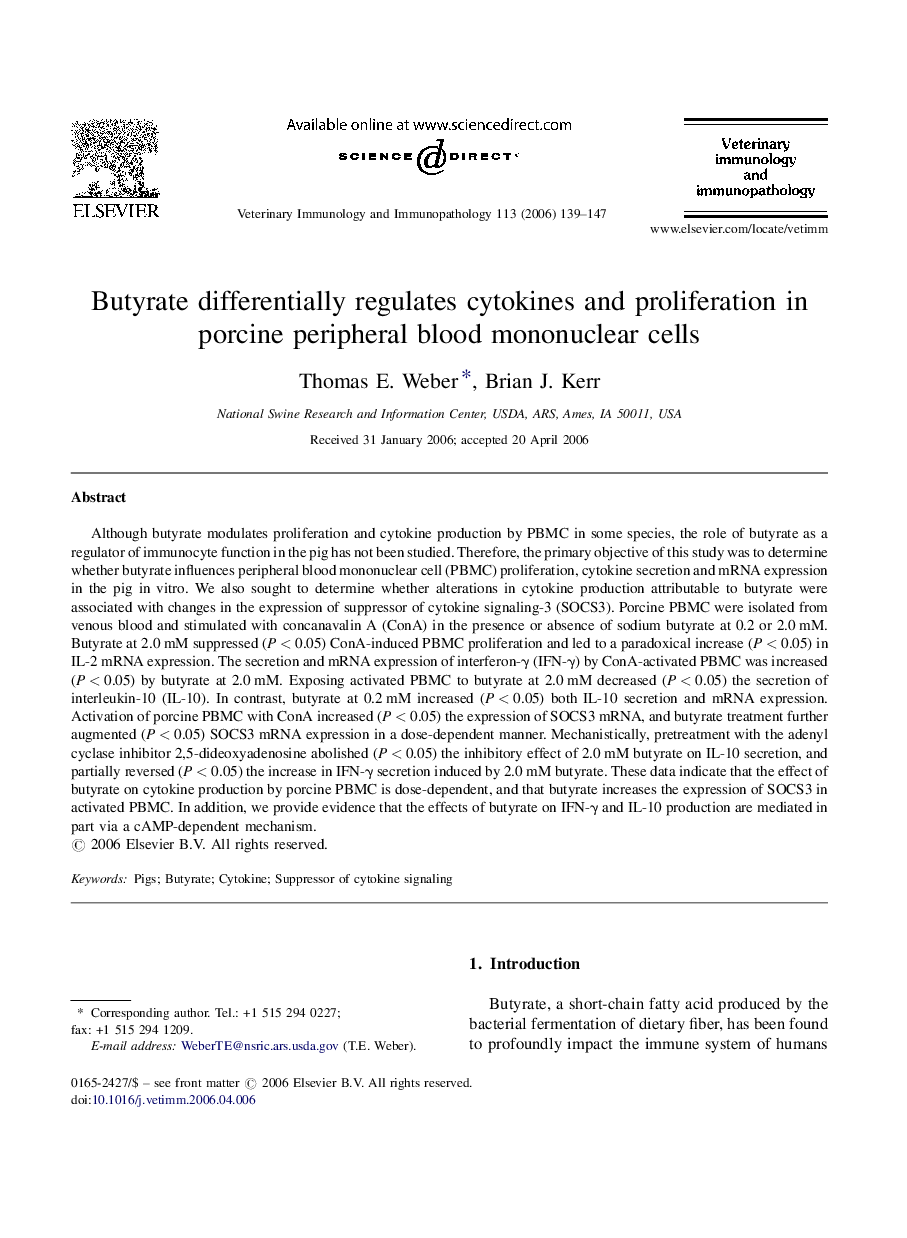| Article ID | Journal | Published Year | Pages | File Type |
|---|---|---|---|---|
| 2463381 | Veterinary Immunology and Immunopathology | 2006 | 9 Pages |
Although butyrate modulates proliferation and cytokine production by PBMC in some species, the role of butyrate as a regulator of immunocyte function in the pig has not been studied. Therefore, the primary objective of this study was to determine whether butyrate influences peripheral blood mononuclear cell (PBMC) proliferation, cytokine secretion and mRNA expression in the pig in vitro. We also sought to determine whether alterations in cytokine production attributable to butyrate were associated with changes in the expression of suppressor of cytokine signaling-3 (SOCS3). Porcine PBMC were isolated from venous blood and stimulated with concanavalin A (ConA) in the presence or absence of sodium butyrate at 0.2 or 2.0 mM. Butyrate at 2.0 mM suppressed (P < 0.05) ConA-induced PBMC proliferation and led to a paradoxical increase (P < 0.05) in IL-2 mRNA expression. The secretion and mRNA expression of interferon-γ (IFN-γ) by ConA-activated PBMC was increased (P < 0.05) by butyrate at 2.0 mM. Exposing activated PBMC to butyrate at 2.0 mM decreased (P < 0.05) the secretion of interleukin-10 (IL-10). In contrast, butyrate at 0.2 mM increased (P < 0.05) both IL-10 secretion and mRNA expression. Activation of porcine PBMC with ConA increased (P < 0.05) the expression of SOCS3 mRNA, and butyrate treatment further augmented (P < 0.05) SOCS3 mRNA expression in a dose-dependent manner. Mechanistically, pretreatment with the adenyl cyclase inhibitor 2,5-dideoxyadenosine abolished (P < 0.05) the inhibitory effect of 2.0 mM butyrate on IL-10 secretion, and partially reversed (P < 0.05) the increase in IFN-γ secretion induced by 2.0 mM butyrate. These data indicate that the effect of butyrate on cytokine production by porcine PBMC is dose-dependent, and that butyrate increases the expression of SOCS3 in activated PBMC. In addition, we provide evidence that the effects of butyrate on IFN-γ and IL-10 production are mediated in part via a cAMP-dependent mechanism.
